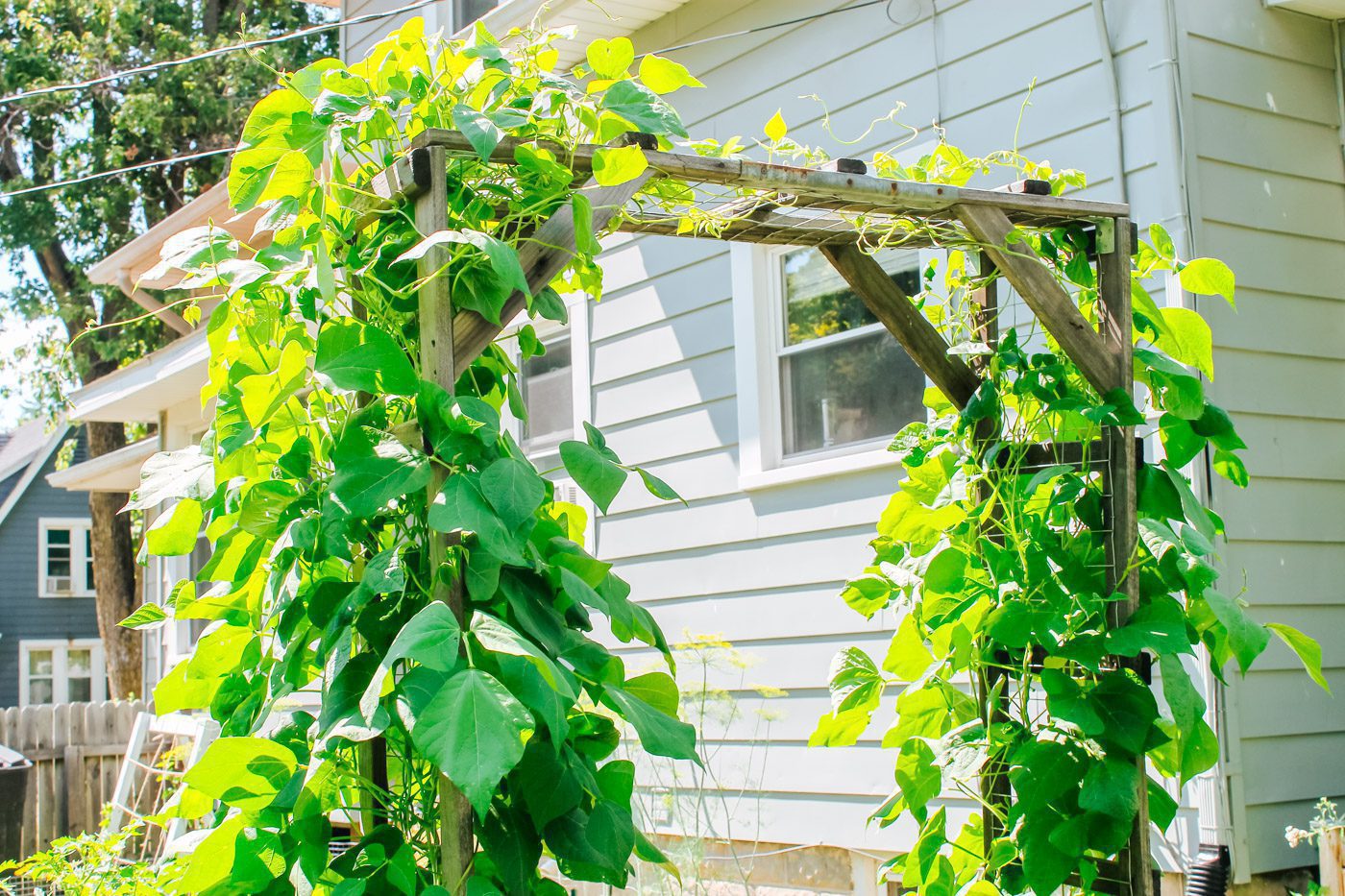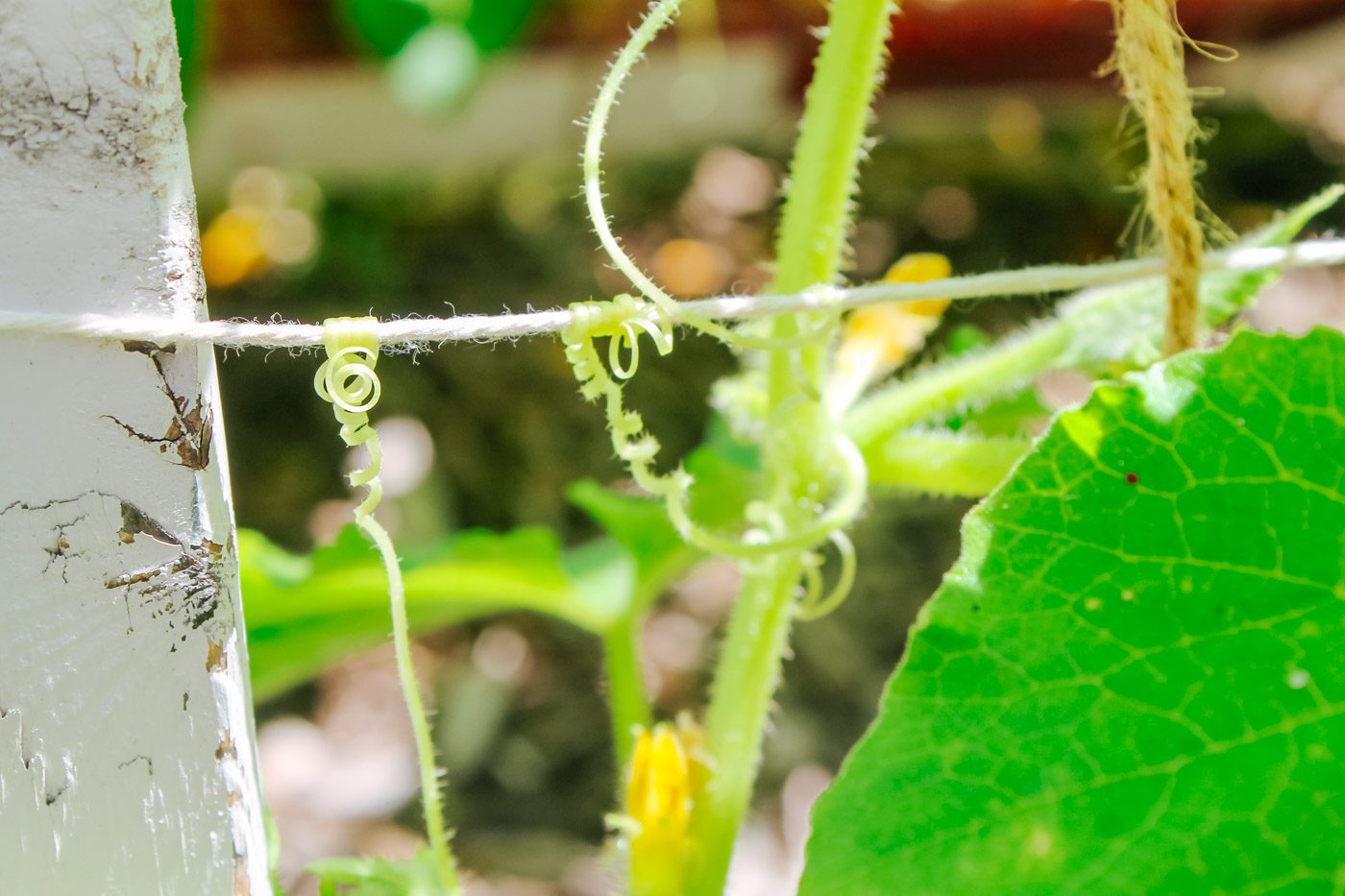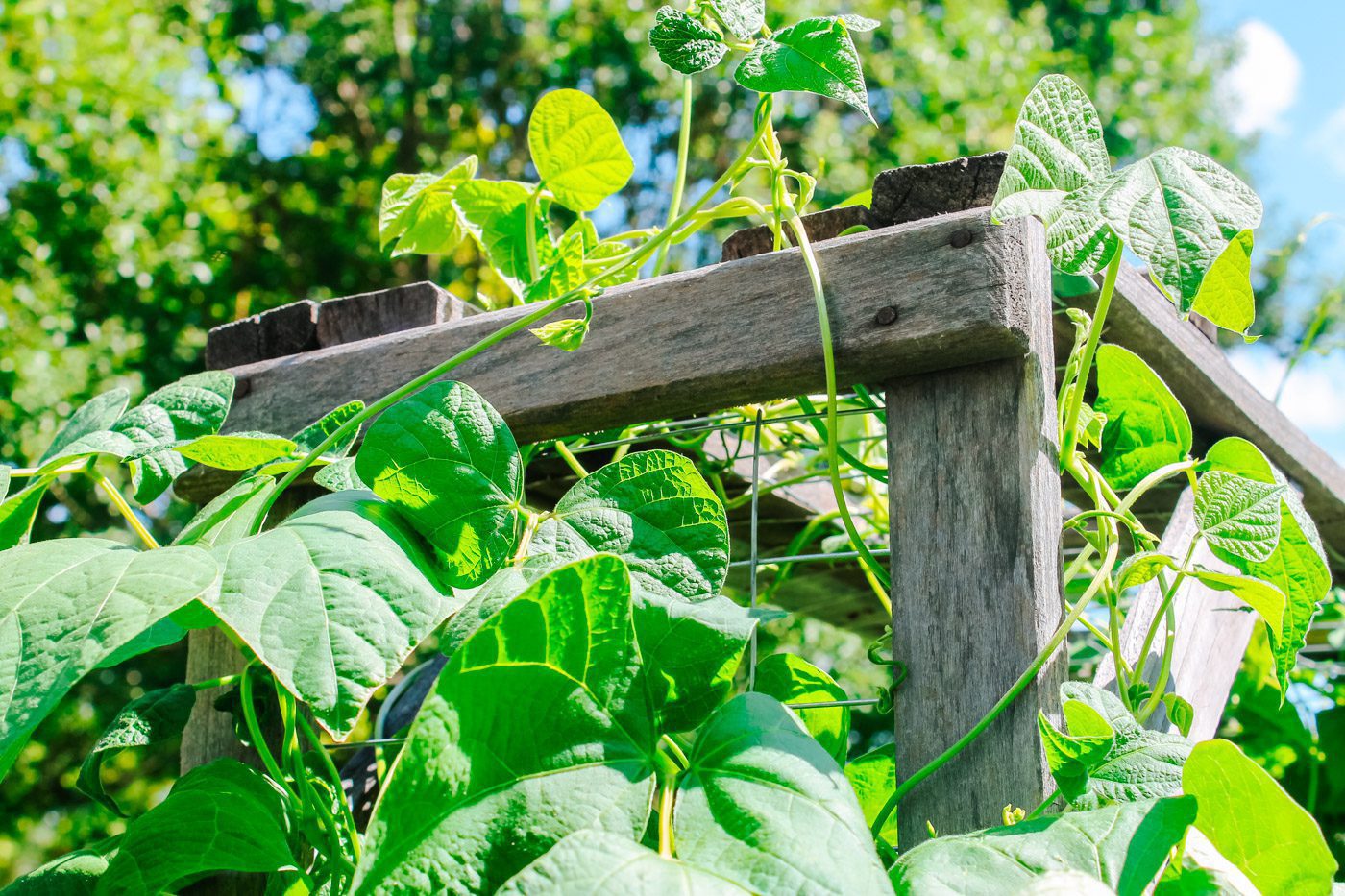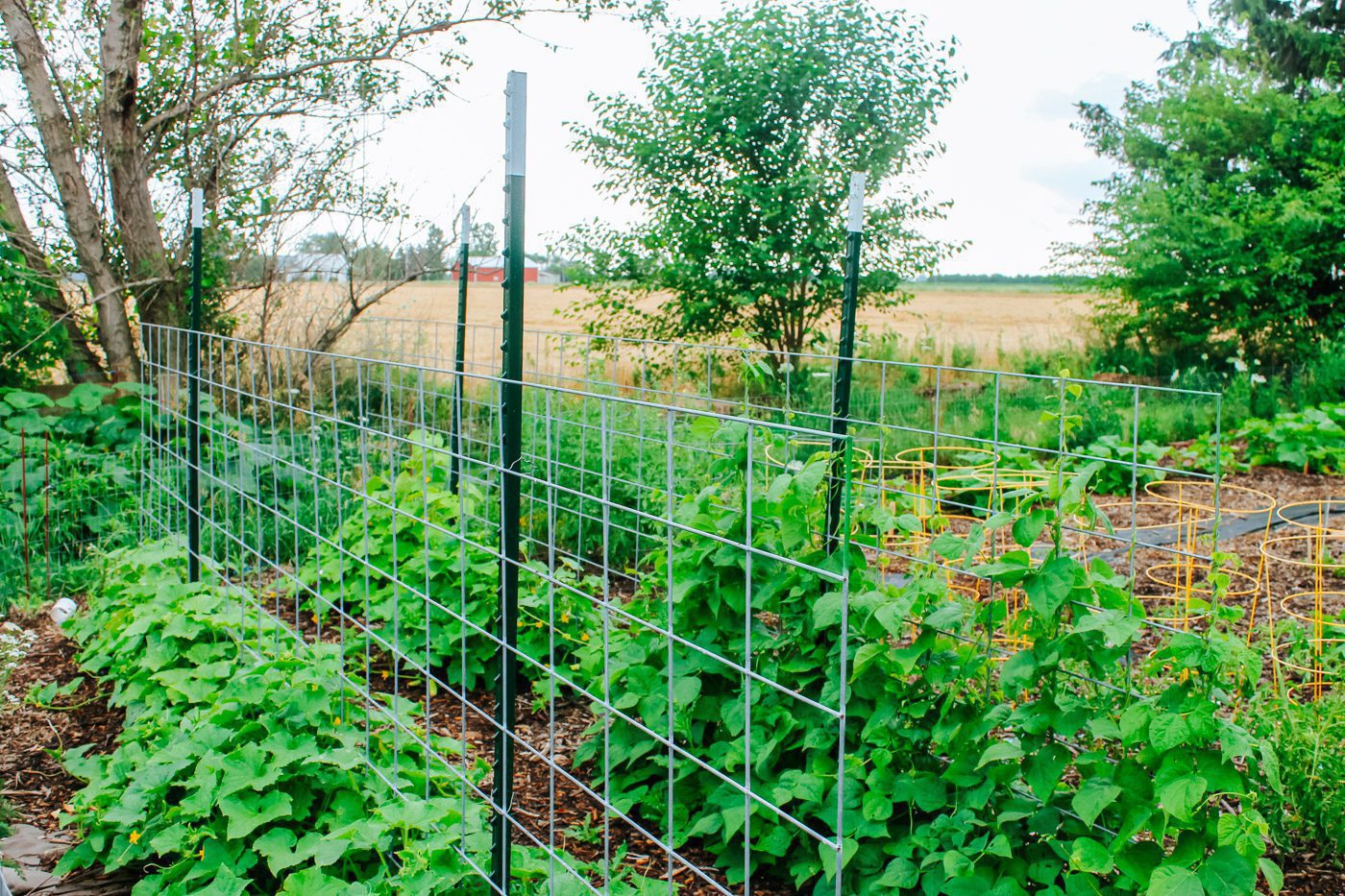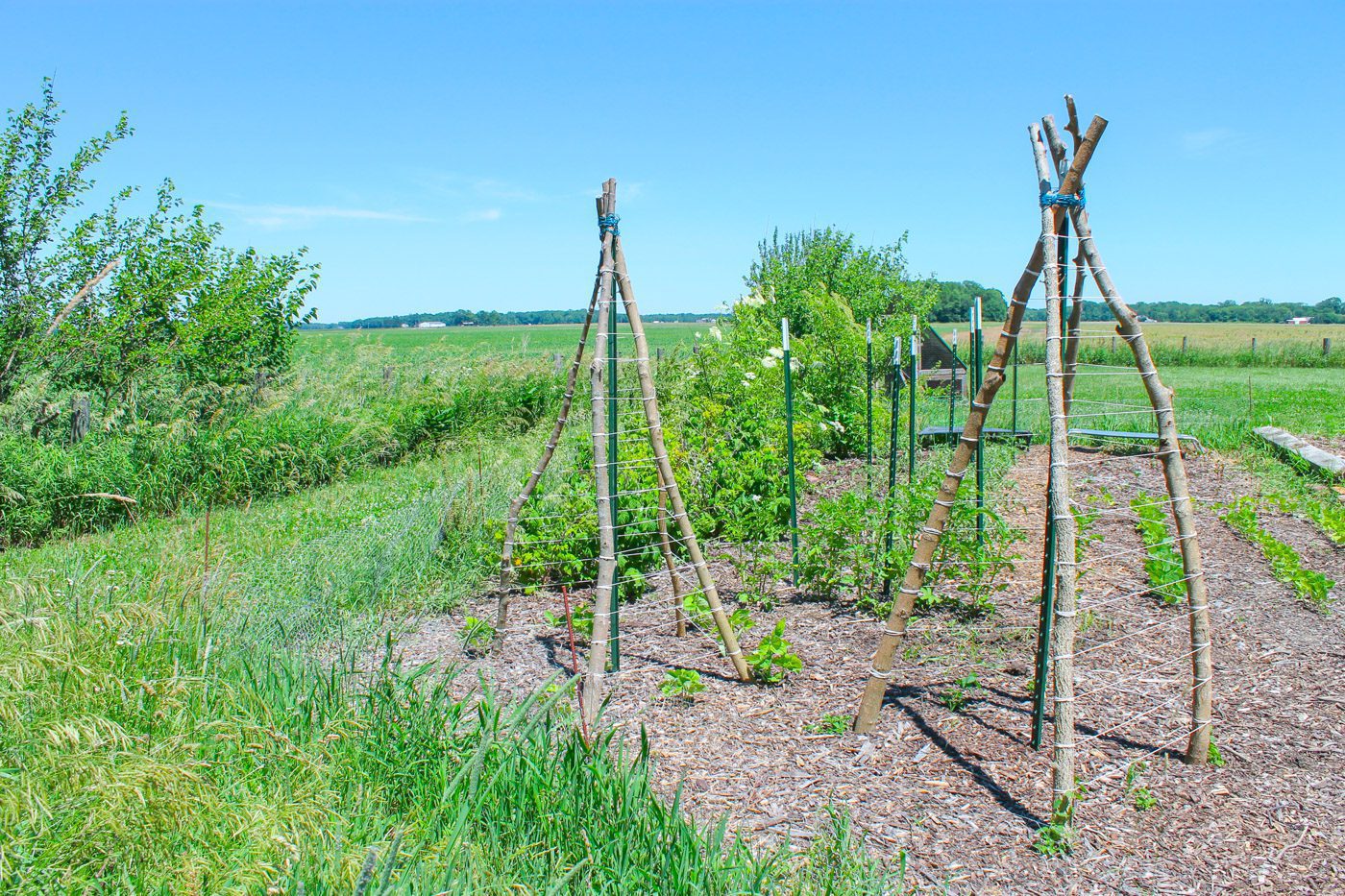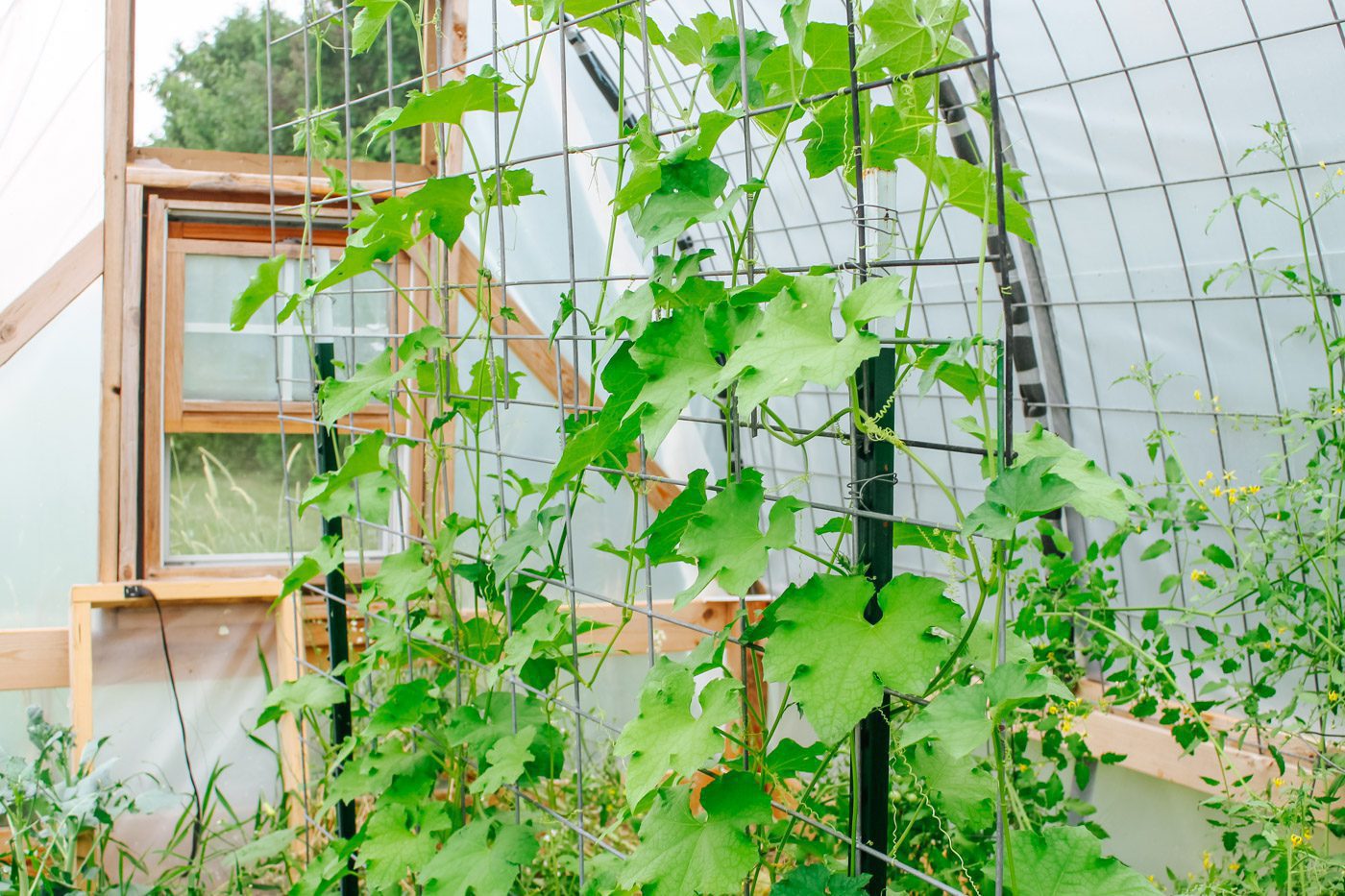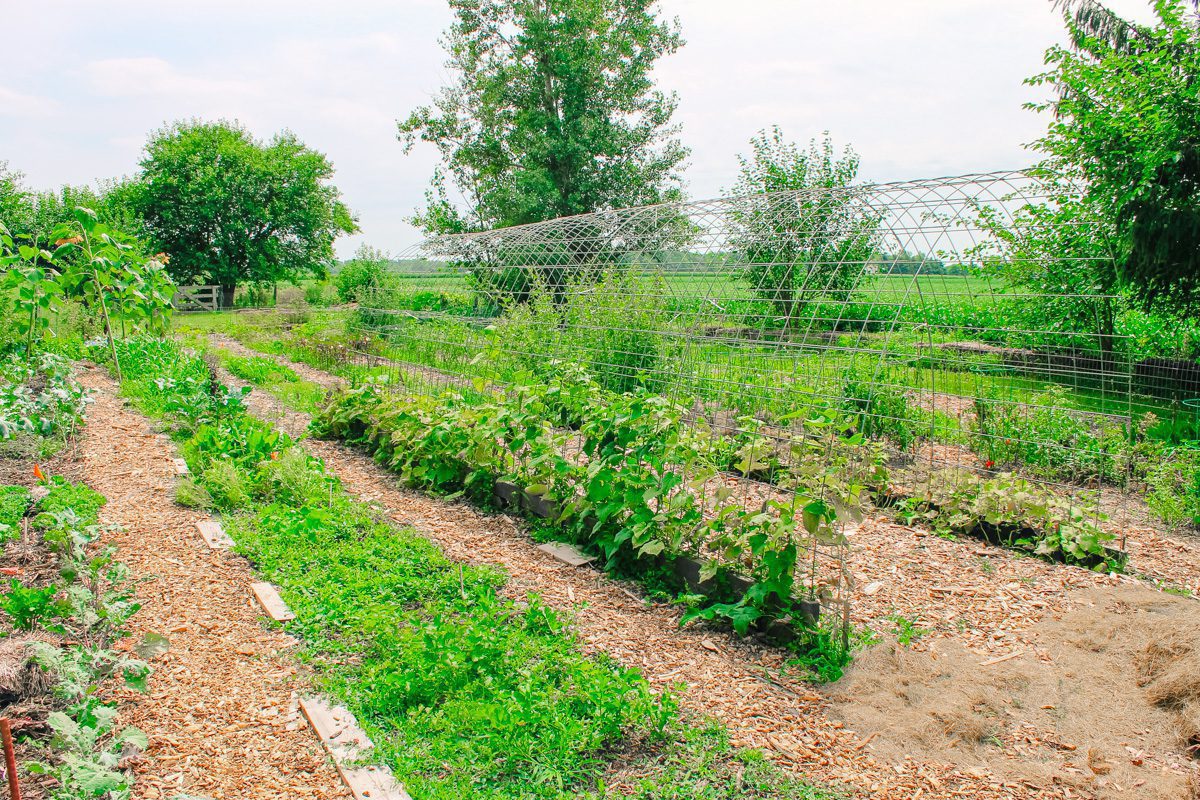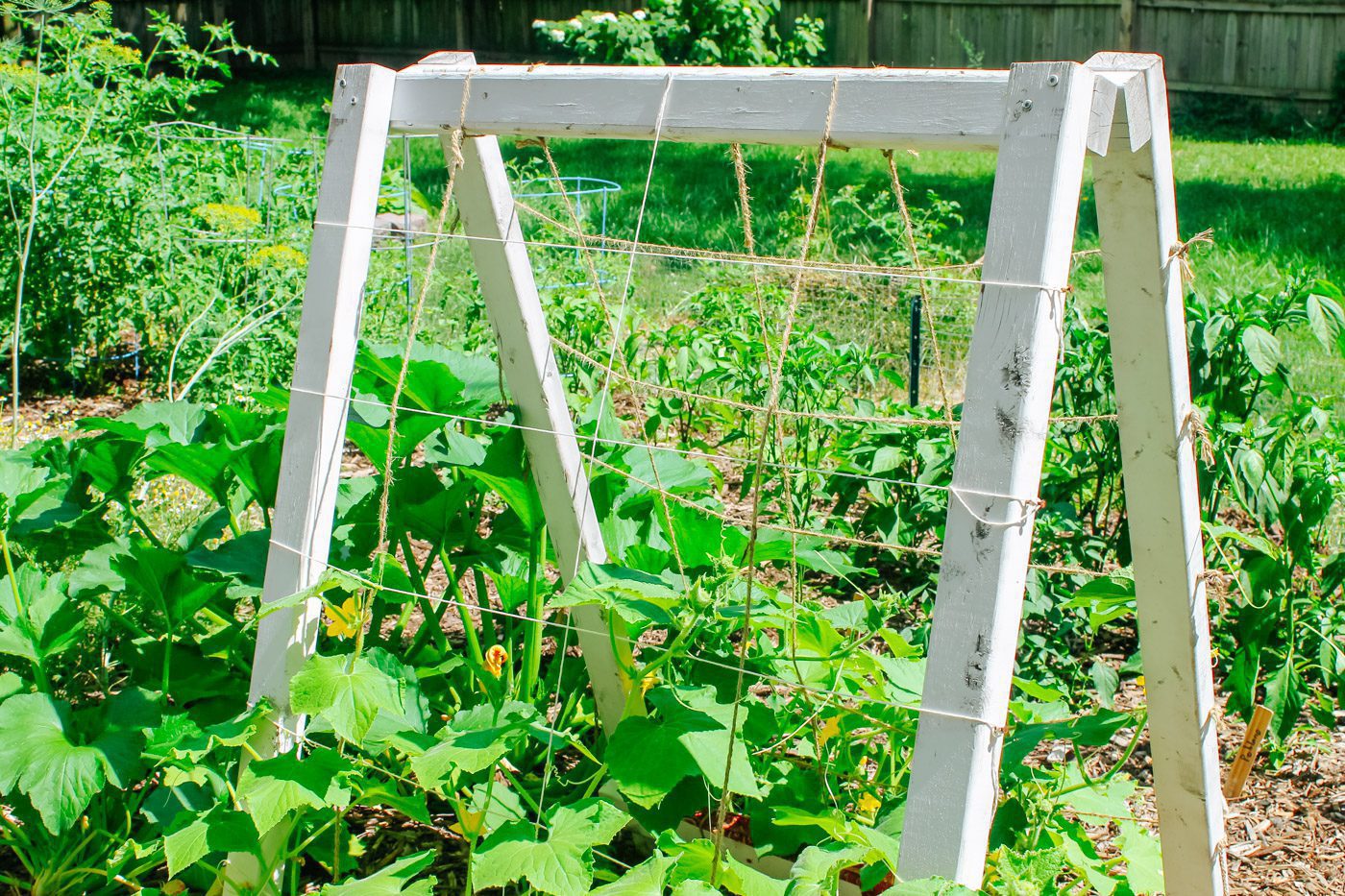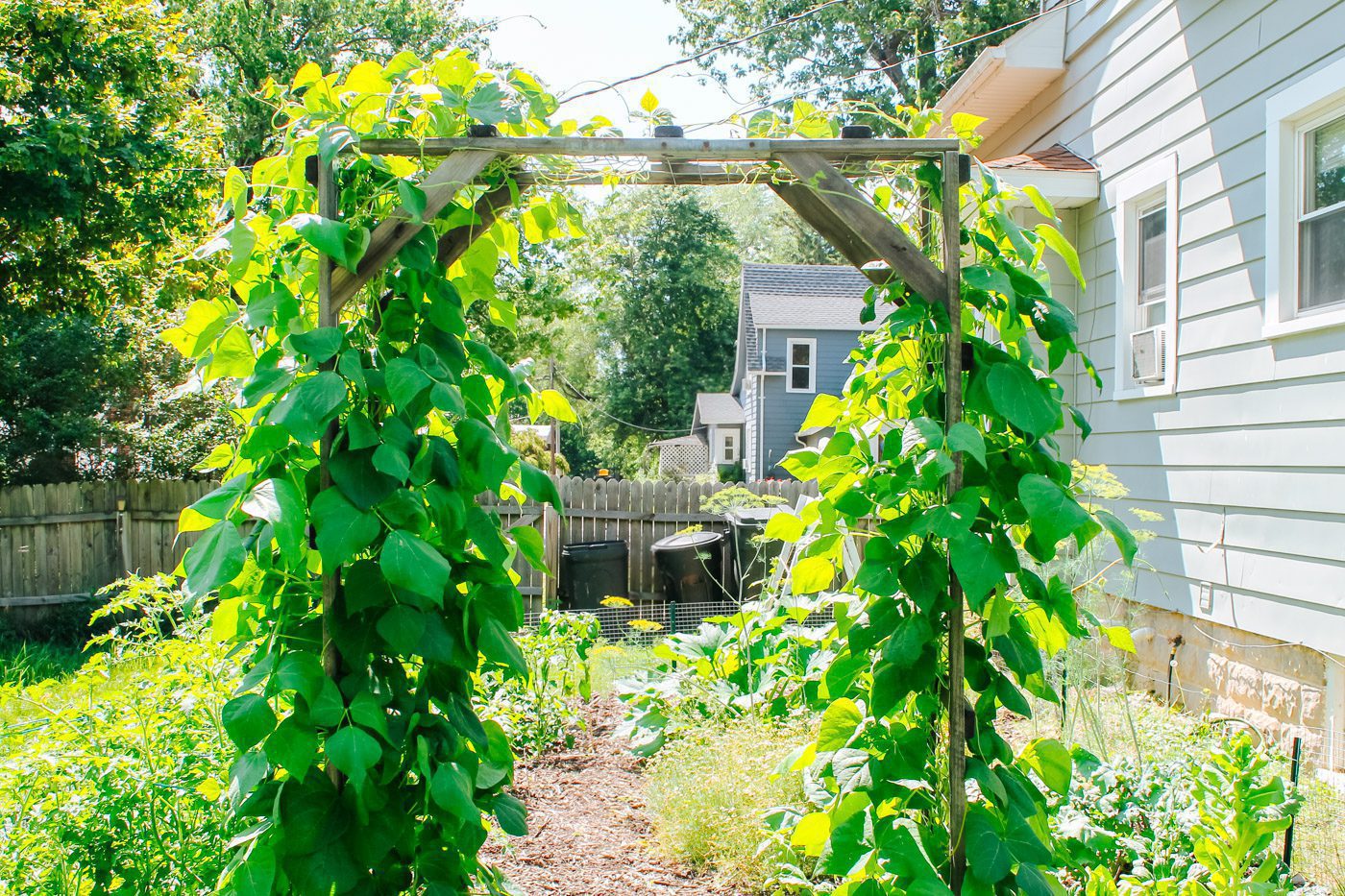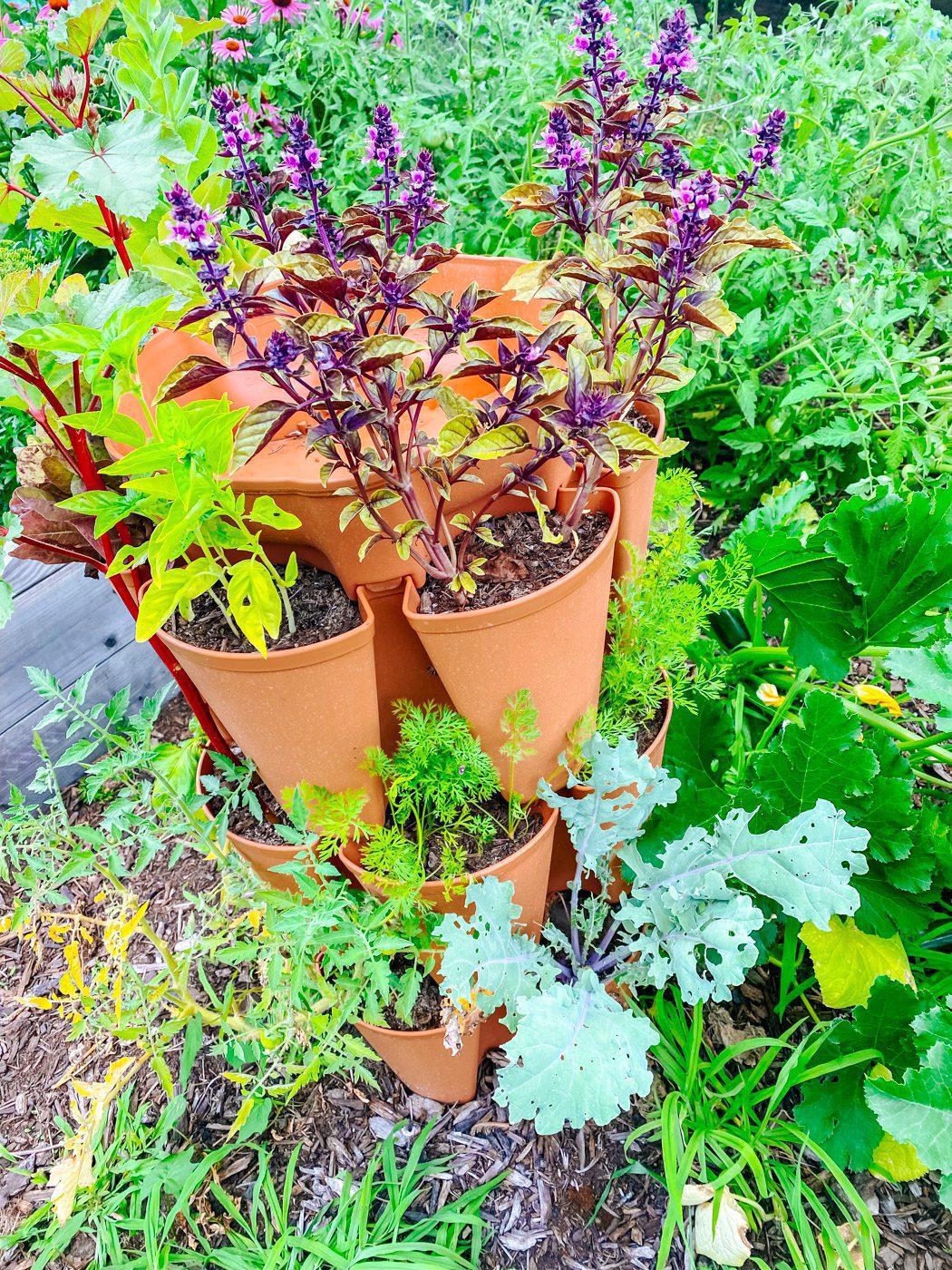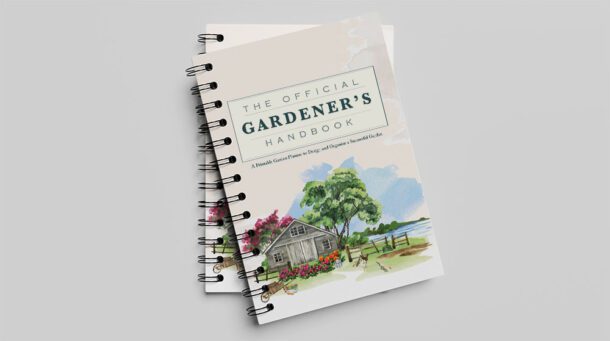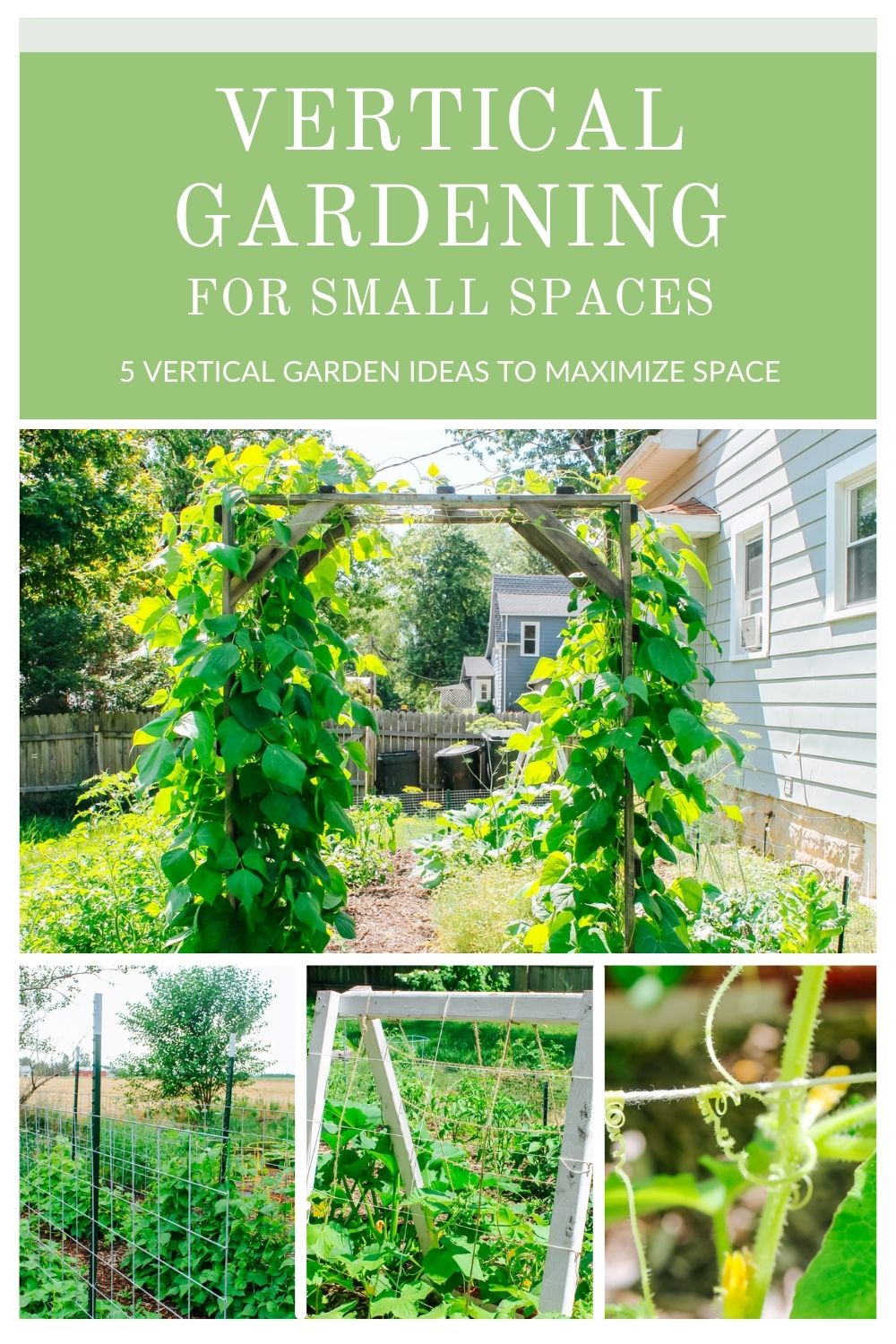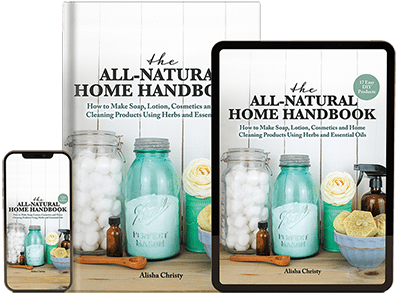If you’re tight on gardening space, a vertical gardening system can help you to maximize your growing potential. Learn the best methods and advantages of growing vertically along with 5+ trellis ideas to construct in your garden space.
Limitless.
That is not the first word that comes to mind when you have a small garden. Usually ones brain thinks logically.
My brain thinks “I have a 12 foot x 10 foot space. I should be able to fit 4 tomato plants, a few peppers, a couple heads of lettuce, maybe some flowers and if I am lucky, a zucchini plant. But you know those puppies have huge leaves and can take over everything, so I’ll probably have to skip planting them this year.”
But what if you stop focusing on the impossible and start turning your attention to the possible — the what if’s, opening the door to the creative imagination.
Instead of looking at your small backyard garden as the only growing space you have, turn your eyes upward to consider the the realm of possibilities of vertical gardening.
When my husband and I wanted to start a garden, we looked at our backyard wondering where to begin. With just over a quarter acre of land, we needed to get creative in order to maximize our growing space to produce the amount of food our family needed. In addition to our Back to Eden garden plot, we added a few containers to our deck, relied heavily on succession planting and grew a few potted plants indoors. All of those options gave us an excellent yield come harvest time.
But the most successful method that has provided us with an abundance of vegetables is to grow our food vertically.
Benefits of Growing Vertically
Growing vertically isn’t just about saving space. There are a variety of advantages to a vertical garden. Here are just a few benefits:
- Less weeding. No one wants to spend endless amounts of time pulling thistles, dandelions and other annoying weeds. Weeds also steal precious nutrients from the soil that your plant could use. With less weeds, your plant will be happier and healthier.
- Ample air flow. Growing plants vertically helps keep them off the ground, providing better air circulation and possible prevention of disease that can come from the ground, such as blight.
- Fewer pests. Growing upwards helps to reduce the number of insects that can cause damage to your plants. I have had a lot less disease issues and leaves with holes on my pole beans than I have on my bush beans.
- Easy to Maintain and Harvest. My 6 foot 2 inch husband finds there is much less wear and tear on his body when he can stand up and harvest rather than bending or crawling to pick vegetation.
Fruits and Veggies to Grow Vertically
Vertical gardening allows you to grow up, not out. You can get away with far less land or growing space which makes a vertical garden ideal for those with a small backyard or even a back deck. Adding a simple trellis to your yard, patio or porch can significantly enhance your growing capabilities. Vining vegetables, fruits and even some flowers work best. Here are a few examples of plants that grow vertically.
- Cucumbers
- Pole beans
- Hops
- Peas
- Melons
- Grapes
- Squash
- Luffa
- Gourds
- Kiwi
- Tomatoes (provided they are held by clips, ties, twine or a cage as they are not natural climbers and will need assistance)
- Roses
- Climbing Hydrangea
- Honeysuckle
- Wisteria
Where to Build a Vertical Garden
If you are planning on starting a vertical garden there are a few elements to consider before you begin.
Will you be setting up your trellis system against a wall? For example, a trellis can be set next to a planter box on a back deck. The trellis is not staked into the ground for support, so you will need to lean it against a wall.
Where is this wall located in terms of sunlight? Select a wall that faces south so that your plants can get the most amount of light throughout the day. If your preferred location is a north facing wall, your plants will get little to no sunlight so you will need to choose a type of plant that loves shade such as lettuce.
Should you decide to build a vertical garden in the middle of your yard, you will need to think about how the trellising system will be supported. By way of illustration we will use the trellis system my husband and I set up on my parents property. The teepee trellis is made up of a variety of branches, twine and a T post. Without the support of the T post, the trellis system would collapse, due to high winds and the weight of the vining plants. Consider the elements, such as wind, heavy rain, sunlight and support when building a freestanding trellis.
5 Vertical Garden Ideas
Change the way you think about gardening! Turn your small gardening space into an edible paradise by adding a vertical system into your landscape. By building a simple trellis, you can produce more food in any tiny space. Here are 5 of our favorite ways to grow vertically.
Teepee Trellis
A simple trellis to hold your vining plants is all you need when you want to grow vertically. Sure, you can go to the store or jump online to purchase a prebuilt trellis but why not build a DIY trellis using supplies you may already have on hand? A teepee can be built with scrap lumber, wooden rods or even some branches from old trees. To assemble a teepee trellis, you’ll need a T post, garden wire, some twine and of course a few branches or rods. We like to grow pole beans and hops on our teepee trellis. You can learn how we build our DIY garden trellis here.
Cattle Panel
Cattle panel is an excellent, inexpensive way to build a trellis. Most hardware stores, like Tractor Supply or Farm and Family sell a few different sizes. Sometimes they’ll even help you cut the panel down to a more manageable size so that it will fit easily into a truck bed or trailer for transportation. To use cattle panel as a trellising system, you will need a couple of T posts and wire. We have staked ours upright to two posts and trellised various varieties of cucumbers. This past summer we grew luffa in my parents greenhouse. The plant grew so tall we had to stack two cattle panels on top of each other. The bottom panel is held but two fence posts. The second panel dangles from the top of the greenhouse using a few of zip ties.
Arch Using Fencing Panels
Another great way to use cattle panel or fence panel is by creating an arch. As the plants climb the gaps between the wires, it creates a tunnel-like appearance which is absolutely magnificent looking. There are a variety of materials and ways to build an archway. One way is to insert the ends of a panel into a raised bed. If you are doing an in-ground garden, you can use a few pieces of wood and rebar to secure the panel in place.
A-Frame Trellis
Every year we place an a-frame trellis into our garden to support our cucumber plants. The frame is built with a few 2x3x10 boards and a couple of hinges. In fact, it is the same frame we used to build our shade cover. Nails are inserted into the outside of the frame, allowing us to attach pieces of twine to create a criss-cross pattern for our vining plants. The a-frame trellis is also an excellent choice for beans and other lightweight vegetables.
Ladder Trellis
The very first trellis we ever built on our property was a garden trellis using two old barn ladders. The DIY trellis allowed us to grow more food while also being aesthetically pleasing. The project seemed a little intimidating at first, as we had no plans or instructions to follow, only the dream in my head. Thankfully, the project was a success and saved as a lot of money — instead of buying a brand new trellis. Plus it gave a few old, worn out ladders, a fresh new purpose.
Vertical Garden Tower
A garden tower, such as the ones from Greenstalk, are a great way to maximize your small garden space. It is perfect for those that have a small backyard garden, live in a condo, an apartment, a townhouse or even a tiny house. The garden tower comes in multiple sizes and colors. The 5 tier vertical planter takes up next to no space and has room to grow 30 smaller plants or root vegetables. Strawberries, bush beans, flowers, herbs and lettuce are perfect to grow vertically in a Greenstalk.
Additional Garden Trellis Ideas
- Bamboo trellis
- Wire such as wire remesh, fencing panels or chicken wire
- Wooden pallet leaned against a wall
- Arbor
- Chain-link fence
- Hanging shoe rack
- Rain gutter garden attached to a sturdy wall such as a wooden fence
- Hanging planters
- Lattice
- Wall planters
Gardening in a small space may have a few restrictions. But with a little creativity and ingenuity, you can maximize your space and produce a bounty of fresh food. There are no limits to how many vertical systems you can add to your property.
What is your favorite way to grow vertically? Share in the comments below.

